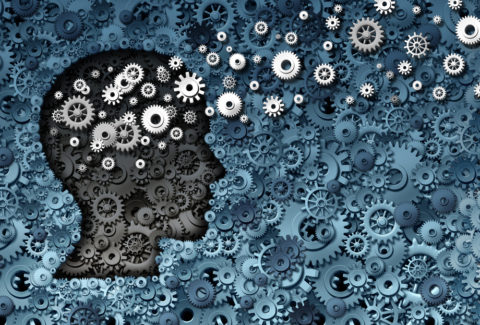Understanding Behavioral Activation: A Key Approach in Treating Depression

Understanding Behavioral Activation: A Key Approach in Treating Depression
Behavioral Activation (BA)[1] is a therapeutic intervention that is highly effective in treating depression. Rooted in the principles of Cognitive-Behavioral Therapy (CBT), BA focuses on helping individuals increase engagement in positive and meaningful activities to combat the cycle of depression.[2] By targeting behaviors, BA aims to improve mood and overall functioning, making it a practical and accessible approach for those struggling with depression.
Core Principles of Behavioral Activation
- The Link Between Behavior and Mood
The fundamental premise of BA is that there is a strong link between behavior and mood.[3] When individuals are depressed, they often withdraw from activities that they once found pleasurable or meaningful, leading to a decrease in positive reinforcement and an increase in negative feelings. This withdrawal can create a vicious cycle, where inactivity leads to more negative thoughts and feelings, which in turn leads to further withdrawal. - Breaking the Cycle of Depression
BA seeks to break this cycle by encouraging individuals to gradually re-engage in activities that can provide positive reinforcement and improve mood.[4] The idea is to help individuals take small, manageable steps towards increasing their activity levels, which can lead to improvements in mood and overall well-being.
Key Components of Behavioral Activation
- Activity Monitoring
One of the first steps in BA is activity monitoring[5], where individuals track their daily activities and moods. This helps both the client and therapist identify patterns of behavior that are contributing to depression. By understanding these patterns, clients can begin to see the connection between their activities and their mood. - Identifying Values and Goals
In BA, individuals work with their therapist to identify their values and goals.[6] This involves exploring what is truly important to them and what they want to achieve in life. By aligning activities with personal values and goals, individuals can find more meaning and motivation in their actions. - Scheduling Activities
Once values and goals are identified, the next step is to schedule activities that are aligned with these values. This can include pleasurable activities, such as hobbies or social interactions, as well as necessary activities, such as household chores or work-related tasks. The goal is to create a balanced schedule that incorporates both enjoyable and essential activities. - Graded Task Assignment
BA uses graded task assignments to help individuals gradually increase their activity levels. This involves breaking down tasks into smaller, manageable steps that can be completed successfully. By achieving these smaller goals, individuals can build confidence and motivation to tackle more challenging tasks. - Overcoming Avoidance
Avoidance is a common behavior in depression, where individuals avoid activities or situations that they find difficult or distressing. BA addresses avoidance by encouraging individuals to face these situations in a gradual and systematic way. This can help reduce the fear and anxiety associated with these activities and increase overall functioning. - Problem-Solving
BA also involves problem-solving strategies to help individuals address barriers to activity. This can include practical solutions to logistical problems, such as time management or transportation issues, as well as coping strategies for emotional barriers, such as anxiety or low motivation.
Benefits of Behavioral Activation
- Accessibility and Simplicity
One of the key benefits of BA is its accessibility and simplicity. Unlike other therapeutic approaches that require extensive training and expertise, BA can be delivered by a wide range of mental health professionals with minimal training. This makes it an accessible option for individuals in various settings, including primary care and community mental health. - Evidence-Based Effectiveness
BA is supported by a robust body of evidence demonstrating its effectiveness in treating depression. Numerous studies have shown that BA can be as effective as other forms of therapy, such as CBT and medication, in reducing depressive symptoms and improving overall functioning. - Focus on Action and Empowerment
BA empowers individuals by focusing on actionable steps that they can take to improve their mood and well-being.[7] This focus on action can be particularly motivating for individuals who feel stuck or helpless in the face of depression. - Flexibility and Adaptability
BA is a flexible and adaptable approach that can be tailored to meet the unique needs and circumstances of each individual.[8] This makes it suitable for a wide range of individuals, including those with chronic or treatment-resistant depression.
Examples of Behavioral Activation in Practice
Case Example: Social Withdrawal
A client struggling with social withdrawal due to depression might begin BA by monitoring their daily activities and identifying patterns of avoidance. The therapist and client might then work together to schedule small, manageable social activities, such as a weekly coffee date with a friend or attending a local community event. By gradually increasing social engagement, the client can begin to experience positive reinforcement and improve their mood.
Case Example: Lack of Motivation
Another client might struggle with a lack of motivation to engage in daily tasks. Through BA, the client might identify their values and goals, such as maintaining a clean and organized living space. The therapist and client could then develop a graded task assignment plan, starting with small tasks like making the bed each morning, and gradually increasing to more challenging tasks like cleaning an entire room. By achieving these small goals, the client can build confidence and motivation to continue engaging in meaningful activities.
In conclusion, Behavioral Activation is a practical and effective approach to treating depression that focuses on increasing engagement in positive and meaningful activities. By breaking the cycle of depression through activity monitoring, goal setting, scheduling, graded task assignments, overcoming avoidance, and problem-solving, BA empowers individuals to take actionable steps towards improving their mood and overall well-being. This evidence-based approach offers a flexible, accessible, and motivating pathway to recovery for those struggling with depression.
[1] Kanter, Jonathan W., et al. “What is behavioral activation?: A review of the empirical literature.” Clinical psychology review 30.6 (2010): 608-620.
[2] Jelinek, Lena, et al. “Brief web-based intervention for depression: randomized controlled trial on behavioral activation.” Journal of Medical Internet Research 22.3 (2020): e15312.
[3] Hopko, Derek R., Jessica F. Magidson, and C. W. Lejuez. “Treatment failure in behavior therapy: Focus on behavioral activation for depression.” Journal of clinical psychology 67.11 (2011): 1106-1116.
[4] Furukawa, Toshi A., et al. “Behavioral activation: Is it the expectation or achievement, of mastery or pleasure that contributes to improvement in depression?.” Journal of affective disorders 238 (2018): 336-341.
[5] Papa, Anthony. “Contextual Behavior Activation.” Techniques of Grief Therapy. Routledge, 2015. 124-128.
[6] Josefowitz, Nina, and Stephen R. Swallow. The Behavioral Activation Workbook for Depression: Powerful Strategies to Boost Your Mood and Build a Better Life. New Harbinger Publications, 2024.
[7] Hasson-Ohayon, Ilanit, et al. “Agency before action: The application of behavioral activation in psychotherapy with persons with psychosis.” Psychotherapy 54.3 (2017): 245.
[8] Losada, Andrés, María Márquez‐González, and Rosa Romero‐Moreno. “Mechanisms of action of a psychological intervention for dementia caregivers: Effects of behavioral activation and modification of dysfunctional thoughts.” International Journal of Geriatric Psychiatry 26.11 (2011): 1119-1127.






